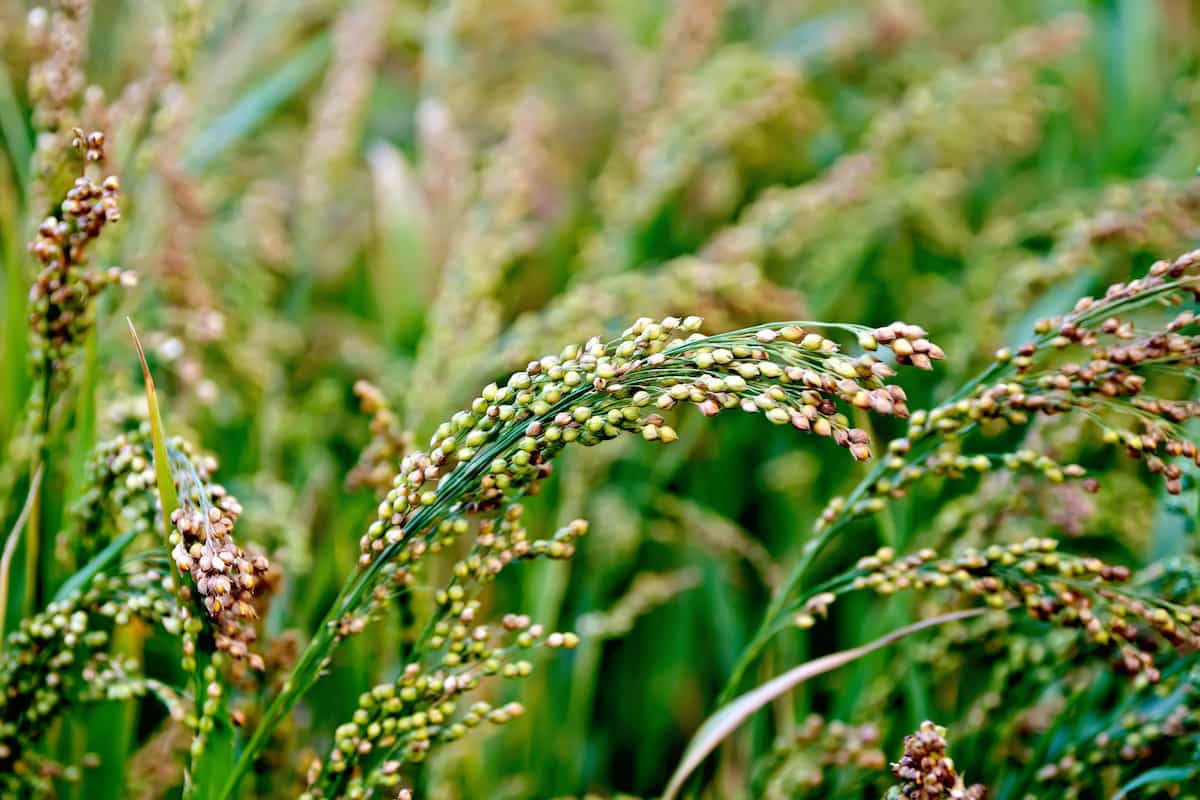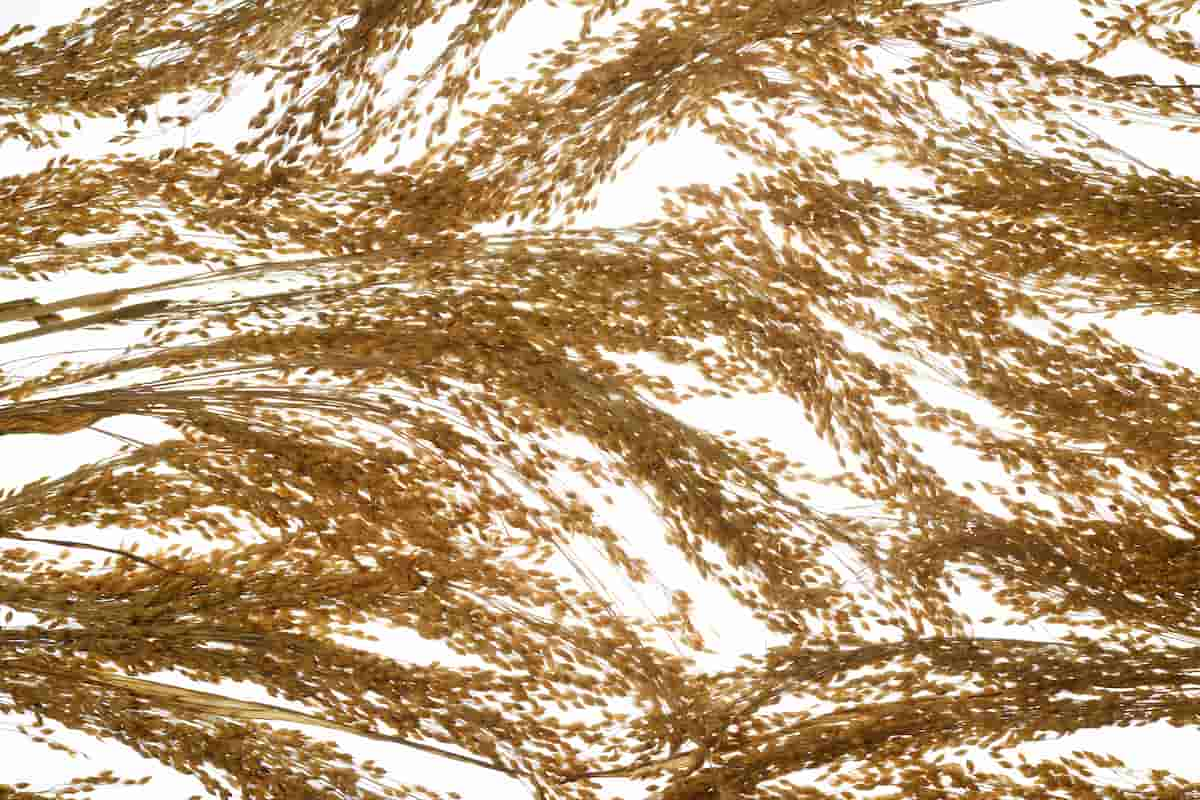Little Millet is a domesticated crop in India, covering an area of 0.26 million hectares with a production of 0.12 million tons. It is an early maturing and adaptable catch crop that can withstand drought and waterlogging, making it a reliable option for farmers. Little Millet is typically consumed as rice and can be used as staple rice.

It is the smallest of all millets, allowing it to cook faster than others. Whole grain little millet is widely available in India, and millet flour can be sourced or made at home. Due to its pest resistance, little Millet has an indefinite storage life.
Little Millets (Sama) Production Guide
Best Package and Practices of Little Millet High Production
- Choosing high-quality seeds.
- Preparing the area with the right soil amendments.
- Managing weeds and pests promptly.
- Providing enough moisture.
Legumes can be interplanted with little Millet to increase production. Fertilizers containing nitrogen, phosphate, and potassium can be used when planting. Care should also be taken with post-harvest processing and storage to preserve quality and minimize losses.
Land/ Field Preparation and Soil Requirements for Little Millet
Land preparation for little millet cultivation involves plowing, leveling, and tilling to a depth of around 8 inches. Little Millet can grow in different soil types, such as clay, loam, and sandy soils. The crop is drought-tolerant and can grow well in soils with a pH level of 5.6 or higher.
Temperature, Climatic, and Rainfall Requirements for Little Millet
A warm and humid climate with consistent rainfall is ideal for little millet farming. The crop requires a minimum temperature of 20°C (68°F) and thrives in a temperature range of 25-30°C (77-86°F). It is a tropical grain crop and does well in such conditions.
Propagation Method and Seed Quality for Little Millet
Little Millet propagates by way of seeds. Use should be made of high germination rate and good quality seeds. Before planting, the seedlings should be given a fungicide treatment to ward off fungi.
Seed Treatment for Little Millet
Treating little millet seeds with fungicides such as Agallol, wettable Ceresan, or Dithane M 45 is recommended to protect them from fungal diseases. The specific formulations and duration of treatment may vary depending on the source, but it is important to follow recommended guidelines for optimal results.
Seed Rate and Spacing for Little Millet
The ideal time for Kharif planting of little Millet is the first fortnight of July with the onset of monsoon. For the Rabi season, planting between September to October in Tamil Nadu and Andhra Pradesh is recommended. In Bihar and Uttar Pradesh, it can be grown as an irrigated catch crop from mid-March to mid-May. The recommended spacing is 25-30 cm (row to row) and 8-10 cm (plant to plant). For line sowing, the seed rate is 8-10 kg/ha, and for broadcasting, it is 12-15 kg/ha.
In case you missed it: Barnyard Millet (Sanwa) Production Guide: A Step-By-Step Cultivation Practices

Sowing Method for Little Millet
Little millets can be sown using either line sowing or broadcasting. To increase agricultural yield and improve crop management, line sowing is advised. With line sowing, plants are spaced 8–10 centimeters apart in rows 25–30 cm apart. Scattering seeds evenly across the entire area is known as broadcasting. While the seed rate for broadcasting is 12–15 kg/ha, it is 8–10 kg/ha for line sowing.
Crop Rotation and Intercropping in Little Millet
The dryland rotation for little Millet may involve small grain-millet-fallow. In irrigated lands, pearl millet can be rotated with chickpea, fodder sorghum, and wheat. Intercropping systems for little Millet include:
- Little Millet + pigeonpea [(4:1), (6:1)] followed by sequential horse gram.
- Little Millet + pigeonpea followed by moth bean.
- Little Millet + lablab [(4:1), (6:1)] followed by horse gram.
- Little Millet + lablab followed by moth bean.
These rotation and intercropping practices can help increase soil health and crop yield.
Manure & Fertilizer Applications in Little Millet
We are applying 5 tons of farmyard manure per hectare for little Millet 2-3 weeks before sowing is recommended. The required fertilizer varies for different states. For Andhra Pradesh, 20:20:0 (NP2O5K2O kg ha-1) is recommended. For Bihar and Odisha, 20:10:0 is recommended. For Tamil Nadu, 40:20:0 is recommended, and for other states, 20:20:0 is recommended. In addition, seed inoculation with Agrobacterium radiobacter and Aspergillus awamori can improve seed yield through bio-fertilizers.
Weed Management and Herbicide Application in Little Millet
Two inter-cultivations and one manual weeding are suggested for rows of plants. As the 30-day completion, it is recommended that a second intercultural operation involving a tyne-harrow be performed. Two hand weedings are recommended for broadcast crops, the first happening 14–20 days after seedling emergence and the second occurring 14–20 days after that.
Water Management in Little Millet
Little Millet is a rain-fed crop and does not require irrigation during the Kharif season. However, one or two irrigations may only be necessary with rainfall.
Disease Control in Little Millet
Grain smut caused by Macalpino mycessharmaeis is a prevalent disease of little Millet, resulting in smutted ovaries that do not grow beyond the size of normal grains. To manage the disease, resistance cultivars like DPI 2394, PLM 202, OLM 203, DPI 2386, and CO 2, cultural practices such as delayed sowing, and seed treatment with Carboxin or Carbendazim at 2 g can be used.
Pest Control in Little Millet
Little Millet is prone to damage from the Shoot fly pest, resulting in classic symptoms of a dead heart in the early stage and profuse tillering in the latter stage. Effective management techniques include:
- Early sowing.
- Enhancing seed rate.
- Removing “dead heart” seedlings. and
- Using Thiamethoxam or imidacloprid for seed treatment.
Applying Phorate 10G or carbofuran as a soil treatment during planting can also be helpful.
In case you missed it: Foxtail Millets Production Guide: A Step-By-Step Cultivation Practices

Harvesting and Threshing of Little Millet
Little Millet is a vital small millet crop grown in rainfed areas in India. Traditional threshing methods, such as beating sticks and bare tractor operation, are time-consuming, labor-intensive, and uneconomical. After the ear heads are physically ripe, the crop is ready for harvest.
Little millet Yield per Acre
Little Millet usually yields 300 to 500 kg per acre. 0It is possible to get 800 kg per acre yields from well-managed fields with high-yielding varieties.
Conclusion
Cultivating little Millet successfully requires meticulous control of operations practices to obtain the maximum yield. The crop can be cultivated in regions that receive rainfall and harvested once the ear-heads fully mature. Cultivating little Millet requires effective management techniques such as early sowing, proper seed rate, removing dead heart seedlings, and using appropriate seed and soil treatments to battle pests and diseases. These techniques are all part of the effective management of little Millet. Farmers can expect an average yield of between 300 and 500 kilograms per acre.
- Feed Your Flock for Less: Top 10 Tips to Save on Chicken Feed
- Ultimate Guide to Ossabaw Island Hog: Breeding, Raising, Diet, and Care
- Hatching Answers: The Top 10 Reasons Your Chickens Aren’t Laying Eggs
- Eggs and Economics: Breaking Down the Cost of Raising Backyard Chickens
- Defend Your Greens: Proven Methods to Keep Iguanas Out of Your Garden
- Ultimate Guide to Cinnamon Queen Chicken: A Comprehensive Guide for Beginners
- Ultimate Guide to California Tan Chicken: Breeding, Raising, Diet, Egg-Production and Care
- Ultimate Guide to Marsh Daisy Chicken: Breeding, Raising, Diet, and Care
- 10 Types of Chicken Farming Businesses You Can Start for Profits